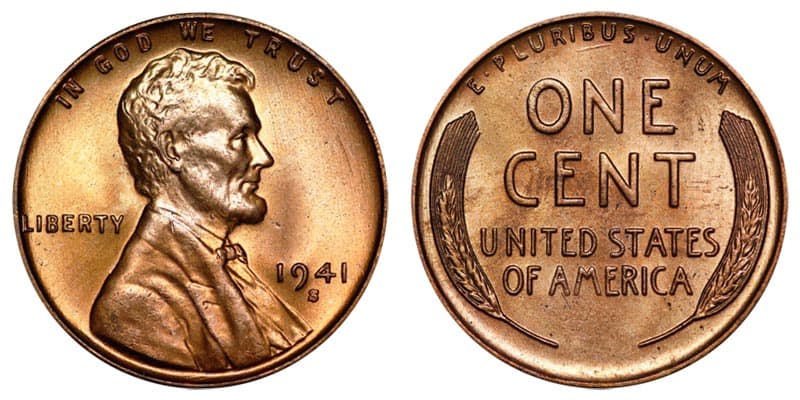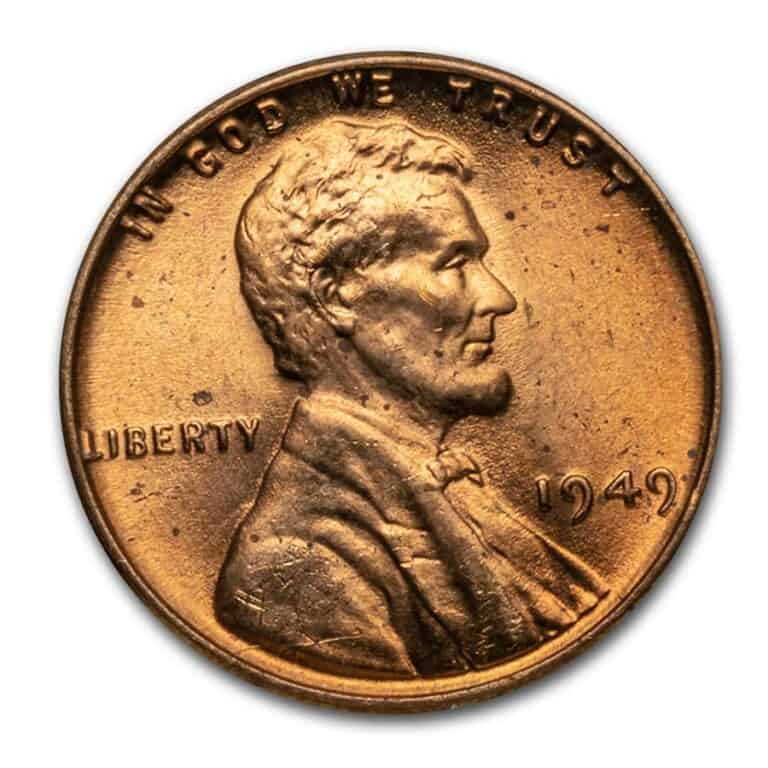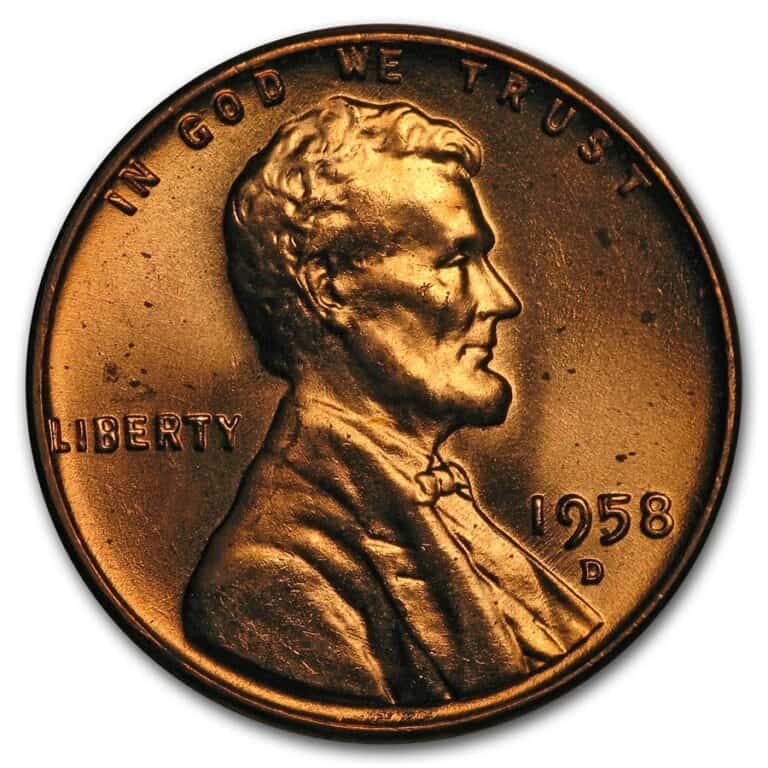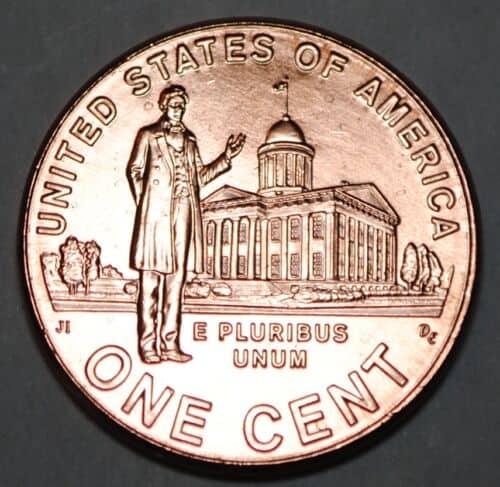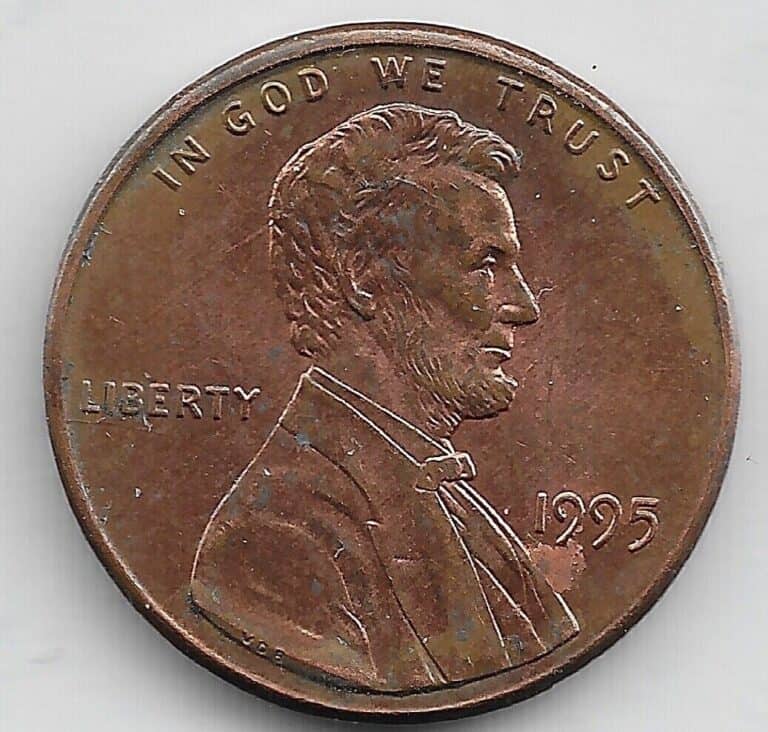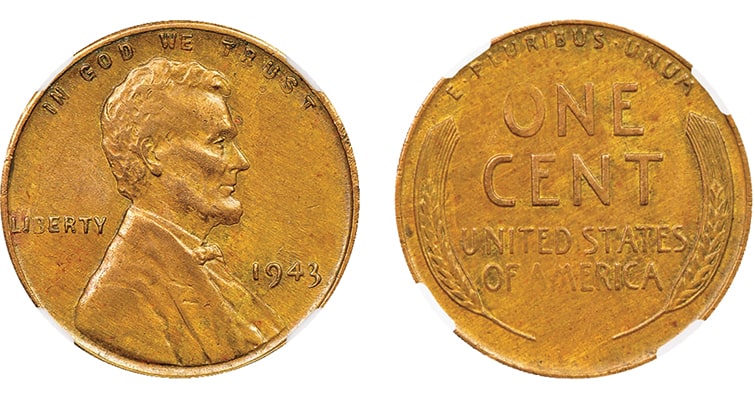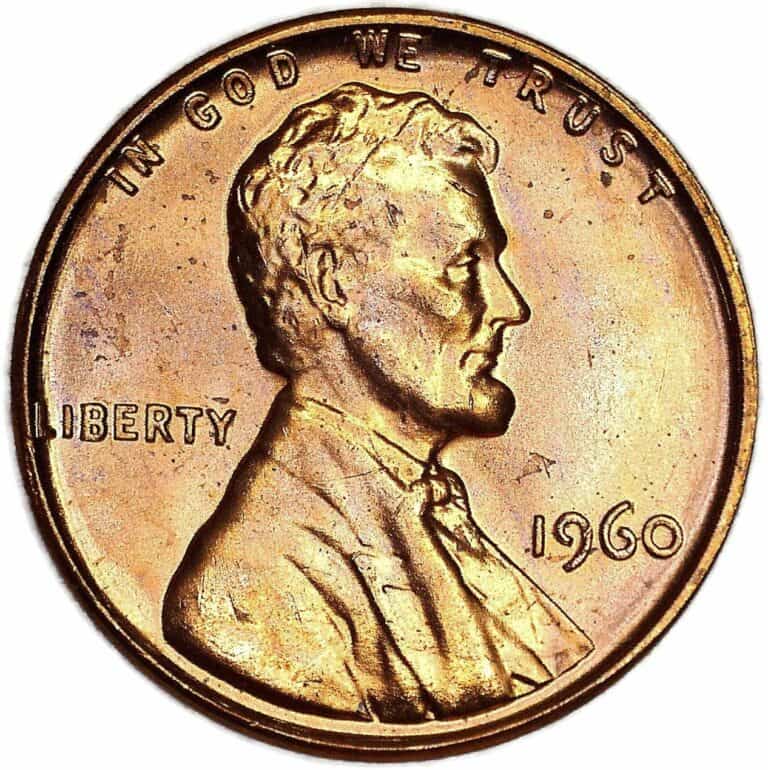1941 Wheat Penny Value: How Much Is It Worth Today?
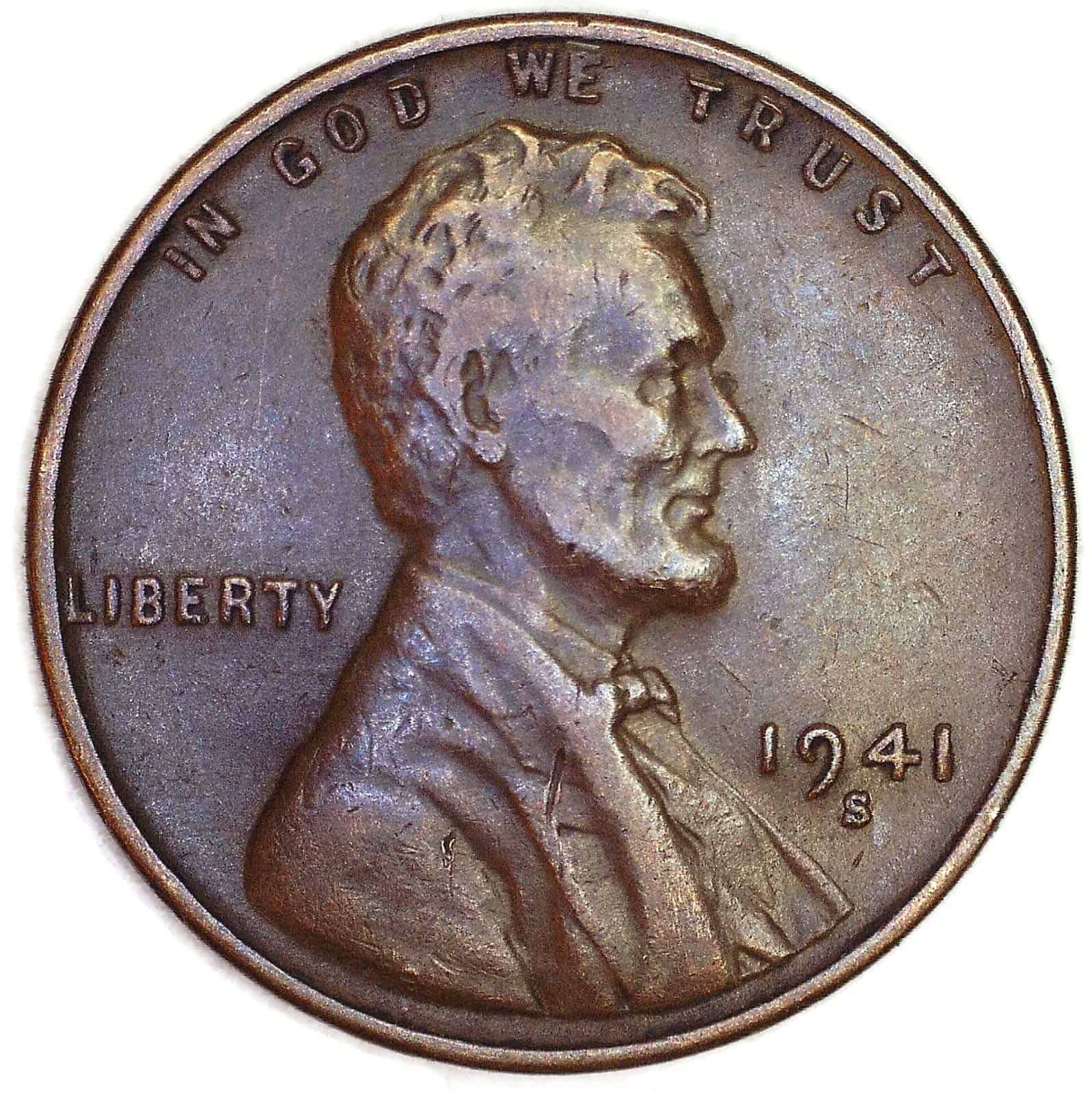
Did you know that a 1941 wheat penny value varies according to its physical condition as well as the location where it was minted? So, if you’re planning to kick off your coin collection hobby, it’s important to be adept at these aspects in detail.
But don’t fret because, in this comprehensive guide, you get to understand the ins and outs of this coin series, from its history to its key designs. In addition, we will cover some of the common errors and even questions associated with these coins.
1941 Wheat Penny Value Chart |
|||||
| Mint Mark | Good | Fine | Extremely Fine | Uncirculated | PR63 |
| 1941 No Mint Mark Wheat Penny Value | $0.02 | $0.06 | $0.40 | $1.71 | ― |
| 1941 D Wheat Penny Value | $0.02 | $0.16 | $0.32 | $1.64 | ― |
| 1941 S Wheat Penny Value | $0.03 | $0.40 | $0.40 | $2.30 | $46 |
1941 No Mint Mark Wheat Penny Value

The Wheat Penny is a long-running one-cent coin that was first released in 1909. From its inception up to 1958, these coins were referred to as Lincoln Wheat Cent. Accordingly, the 1941 Wheat Penny is part of this category.
During this year, the three US mint facilities helped one another to produce more than 1.1 billion coins. And one of the major manufacturers of the 1941 Wheat Penny was Philadelphia. From the total number of coins produced, 887,018,000 of which were created by the state.
This makes Philadelphia the primary source of the 1941 Wheat Penny. The production followed the original coin composition, which was 95% copper, 2.5% zinc, and 2.5% tin. This composition, however, was modified two years later when the US took part in World War II.
Because of the war, the US Mint had to limit copper and tin usage. Hence, they look for other alternatives and eventually replaced these metals with zinc-plated steel in 1943 up until 1982.
Most coins that were struck in Philadelphia do not have any mint marks. Thus, all you can see on the obverse and reverse sides are the original designs crafted by Victor Brenner.
To have a better grasp of the designs, let’s start off with the front section. The obverse gave emphasis to the well-loved American president, Abraham Lincoln. According to the coin designer, the image of Lincoln was in reference to his own creation of a 1907 plaque with Lincoln reading to a child.
The left-facing portrait of Lincoln is surrounded by relevant markings such as “IN GOD WE TRUST” on the top and “LIBERTY” on the left area. The “IN GOD WE TRUST” marking is known to be the official motto of the country while liberty itself is one of the two foundations of the US government, along with equality.
Apart from these designs, the year was also engraved on the right section. Since these were struck in Philadelphia, there is no specific mark below the year.
Moving forward, the back section encompasses a series of elements, including the two stalks of wheat that bounds the left and right edges. At the center are the words “ONE CENT” and “UNITED STATES OF AMERICA.” Another famous US motto, which is “E PLURIBUS UNUM”, is engraved on the coin as well.
In general, 1941 No Mint Mark Wheat Penny coins were designed to be distributed to the market for daily use. Because of their nature, these coins are widely circulated, losing their rarity. However, the current value of these coins is still higher than their face value of $0.01.
For pieces that are kept in good condition, this is times two its current worth. On the contrary, coins with fine to very fine grading may be appraised between $0.06 and $0.40. There are also uncirculated pennies that reach up to $1.71.
1941 D Wheat Penny Value
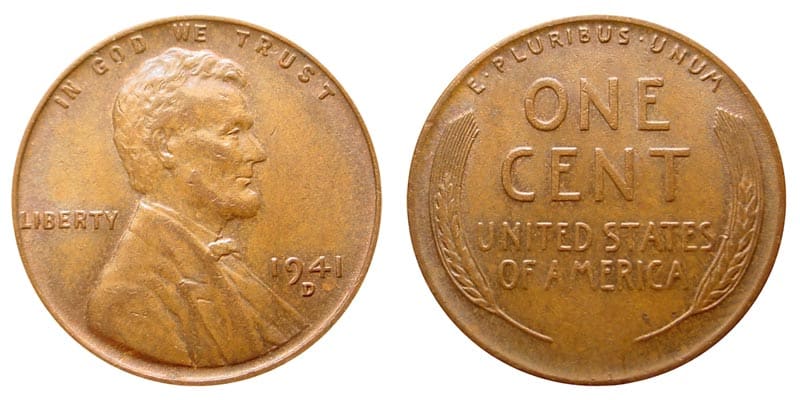
Denver was also part of the US Mints that produced the 1941 Wheat Penny. In fact, it released a total of 128,700,000 pieces. Although the percentage compared to Philadelphia Mint was significantly lower, this still helped in the monetary circulation of wheat pennies during that year.
Since most 1941 D Wheat Penny coins were meant to be used commercially, it’s quite a feat to find uncirculated pieces in mint condition. But if you find one, the value is way higher than the face value. Some that are graded MS63 can even sell for up to $6.65.
Meanwhile, circulated pieces in good condition only sell for up to $0.02. Finer-state coins, on the other hand, can be traded for $0.32 or $1.64. Because 1941 D wheat pennies are usually cheaper, it’s definitely easy to collect these coins and add them to your collection.
To distinguish these coins, you just take a closer look at the obverse side of the coin. Right below the year of minting, which is 1941, you’d see a small letter “D”. This is the key indication that the coin was minted in Denver.
All other obverse elements are copied like the image of Abraham Lincoln and other primary markings. These include “IN GOD WE TRUST” and “LIBERTY.”
Likewise, the reverse followed the standard inclusions such as the wheat stalks on the edges, together with all important words. This means you can also find the labels “ONE CENT”, “UNITED STATES OF AMERICA”, and “E PLURIBUS UNUM” on the coin.
1941 S Wheat Penny Value
Aside from Philadelphia and Denver mints, San Francisco also took part in the production of 1941 Wheat Penny coins. They manufactured two types of coins, circulated and proof coins. For the circulated category, a total of 92,360,000 pieces were released. On the other hand, they had 21,100 proof coins.
Because of the high number of circulated 1941 S Wheat Penny, it’s not that difficult to find these pieces in the market. However, the situation is different if you’re looking for a 1941 S-proof Wheat Penny. With only over 21 thousand pieces, these are sought-after items among collectors.
A proof coin that is graded MS63 normally starts at $46 while an MS65+ piece could be valued at around $190 or even more. This makes 1941 S Wheat Penny-proof coins the priciest of all other coins minted during the year. Likewise, if you’d come across some errors on the item, you’d expect a better valuation.
To distinguish these coins from those manufactured in Philadelphia and Denver, it has a specific mint mark too. The letter “S” is engraved on the front side, underneath the year “1941”. Other than that, all key designs on the obverse and reverse sides are retained.
Since there are two types of coins produced by San Francisco, it’s crucial to be able to determine the key features between the two. Proof coins usually come with very defined details because the planchets are struck twice. Comparatively, normal coins are only struck once, hence the details aren’t that striking.
Also, you can easily compare standard coins and proof coins because of the surface. Proof pieces are shinier with a more elegant finish and a mirror-like background.
1941 Wheat Penny Grading
Before you purchase or sell your 1941 D Wheat Penny, it’s crucial to be knowledgeable of the valuation process. Renowned coin platforms generally make use of different factors, including the nature of its use―whether for circulation or not―as well as the current state of the coin.
Pieces with higher grades are truly more attractive to buyers. Other than that, errors impact how the coin is appraised. Many experts consider errors as a key component to making a coin stand out from the norm. Because of the rarity caused by the errors, coin collectors are willing to pay more than the standard price.
1941 Wheat Penny Error Lists
From equipment issues to skill inconsistency, there are several reasons why errors occur during production. While errors are deemed to be poor quality of work, these have actually become a key factor of a coin’s rarity. And when coins are considered unique, this helps in improving their worth.
Therefore, you have to go through the list of errors below to be more proficient in the nuts and bolts of the coin. Likewise, this will definitely be helpful so you wouldn’t get taken advantage of during valuation.
1. 1941 Wheat Penny Double Die
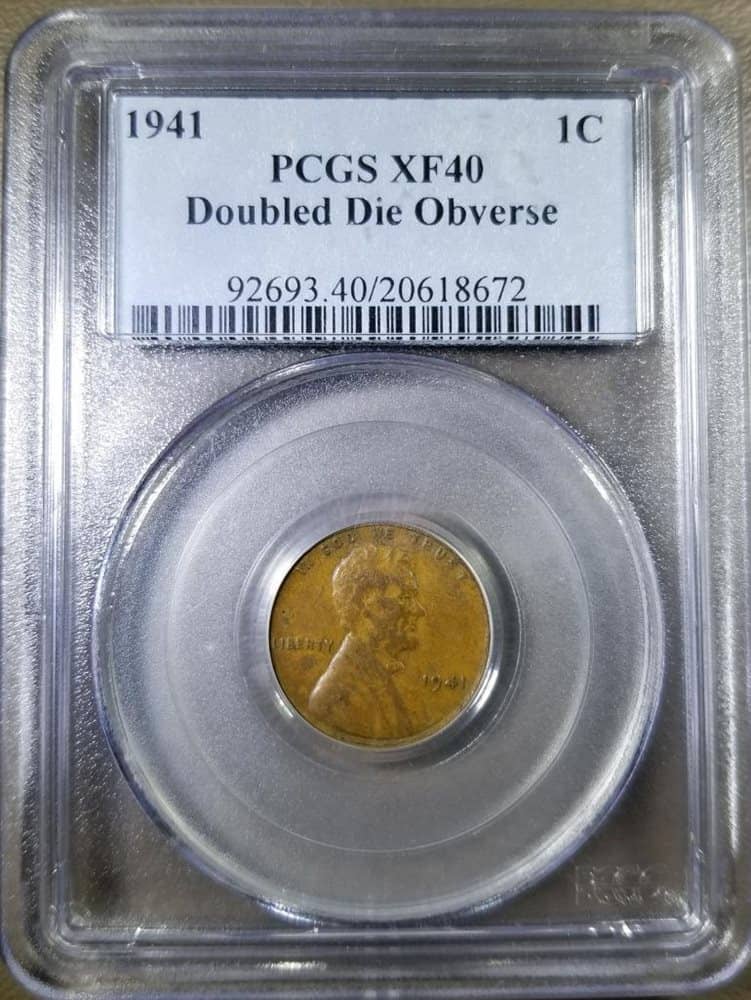
Double die errors are probably one of the most prominent issues during the production of old coins. And this transpired with the minting of the 1941 Wheat Penny. Doubling of the obverse designs was recorded in some coins struck in Philadelphia.
The errors were noted on the motto found on the obverse side “IN GOD WE TRUST,” specifically along the edges of the letters. Although the error is not quite visible, it still improves the price of the coin. This particular flaw raises the value from less than a dollar to a hundred.
For example, an extremely fine coin with a double die is often priced at $120. On the contrary, MS63 coins are around $300 and an MS65 can soar as high as $1200. Henceforth, it is important that you take care of the coin’s physical features because it significantly impacts the valuation of the material.
2. 1941 Wheat Penny Struck on an Experimental Planchet
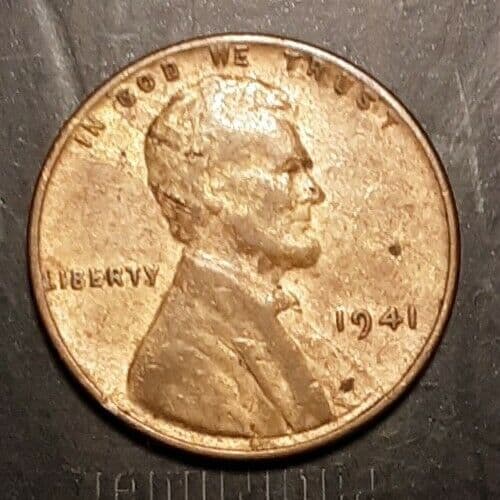
Since 1941 Wheat Penny coins were minted during the onslaught of World War II, and the US government had to adjust the composition of the coins. One key factor was to remove and replace the metal element to give way to the production of weaponry.
Although the coins produced in 1941 generally used the original composition of materials, some utilized different elements. Instead of the 95% copper, 2.5% zinc, and 2.5% tin combination, there were pieces made from 90% copper, 5% zinc, and 5% tin.
Accordingly, this was recorded during a 2005 auction for an MS64 coin. It had unique percentages of materials used for the planchet, making it distinct. As result, the value of this unique coin surges up to $600.
3. 1941 Wheat Penny with Digit Shift Error
This is one of the few occasions when the error is focused on the year of minting. There was a coin produced in San Francisco that had an unusual error with the last digit slightly shifted to the left side. As a result, the number “1” on the “1941” label is slanted.
If you have this specific coin, the value is more or less $300, though this could still vary depending on the condition of the coin. Mint state pieces are highly regarded, hence pricier compared to lower-grade coins.
1941 Wheat Penny FAQ
1. Is a 1941 wheat penny rare?
No, the 1941 Wheat Penny is not considered rare. The reason for such is because of its high mintage, which reached more than 887 million. This means that this type of coin is very abundant and is widely accessible in the market, even now.
However, there could be exceptions to the general rule, especially if you take into account errors. Flaws on the coin are typically valued higher because of their uniqueness.
2. How do I know if my 1941 penny is valuable?
If you’re a newbie coin collector, chances are, you are unsure of the value of your coin. Well, there’s nothing to fret about because it’s quite easy to determine if your coin is just worth some cents or a couple of dollars. To start, check the condition of the coin. Then, evaluate the minting mark.
For Wheat dollars, the minting location does not significantly impact the value of coins, especially the circulated ones. Perhaps the only difference would be a couple of cents, or sometimes 1 dollar. However, proof coins produced in San Francisco, are certainly more valuable because of their striking features.
On top of that, you need to consider the errors found on the coin as the price rises with every flaw caused by the usual production. However, if the defect is due to usage, unfortunately, these do not help in improving its value.
3. How much is a wheat penny 1941 no mint mark?
These coins are those that were manufactured in Philadelphia, hence no mint marks. Because most pieces struck in Philadelphia are intended to be used for daily transactions, the value of these coins is not high. These range from $0.02 to $1.71, depending on the state of the item.
